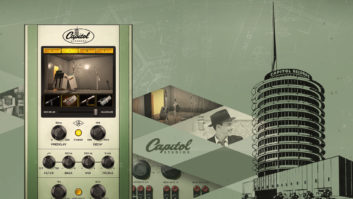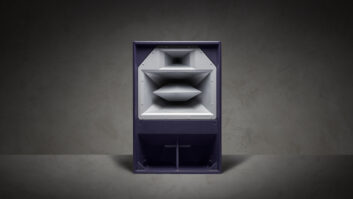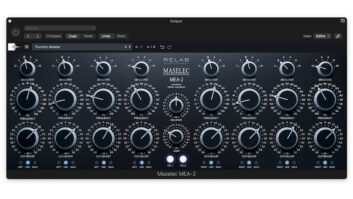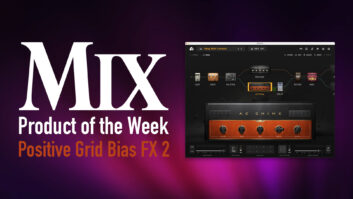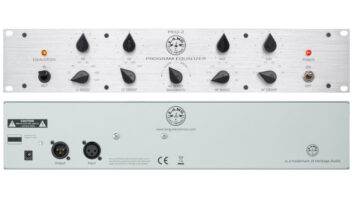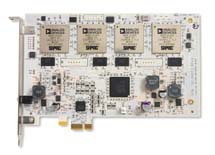
Universal Audio’s award-winning UAD-1 DSP accelerator cards/software plug-in platform has been a hit with serious DAW devotees since it was first announced. However, the success of the system left users wanting more—more speed, more options and more power to run even more simultaneous effects. Finally, it’s here in the form of the UAD-2 (pictured), which offers three flavors of cards—Solo, Duo or Quad—providing 2.5-, 5- or 10-times the capacity for instantiations of the original UAD-1 hardware. The PCIe-format UAD-2 cards employ one, two or four of Analog Device’s latest generation SHARC 21369 floating-point processors for tracking, mixing or mastering at sample rates from 44.1 to 192k Hz.
Shipping today, the UAD-2 is available in nine different hardware/software combinations with street pricing from $499 to $1,999—all with bundled software and included cash vouchers ($50 to $500, depending on model) for expanding your system from a wide selection of plug-ins from the UA’s online store. Adding to the punch, the new system is scalable, and up to four of the Solo, Duo or Quad UAD-2 cards in any combination can mixed or matched for greater flexibility.
I was among a select group of pro audio press given a sneak preview last week of the UAD-2 system, which appropriately enough was held at San Francisco’s Broken Radio Studios—a new complex on the site of original UA founder Bill Putnam Sr.’s historic Coast Recorders. During the presentation, UA marketing VP Mike Barnes was enthusiastic, both about the product’s potential and the fact that the UAD-2 was already shipping by its official launch date of August 29, 2008.
“The UAD-2 is set to shake up the audio industry even more radically than UAD-1 did,” Barnes explains. “We listened hard to the power, feature and plug-in requests from our loyal UAD-1 user base. Then we designed the new potent UAD-2 DSP platform for DAWs to be ‘the one’ that delivers all the sound and channel counts of large-format analog consoles plus all the authentic tone of classic outboard FX inside the box.”
Besides the company’s own range of available plug-ins—including popular software re-creations of UA’s classic LA-2A and 1176 compressors—UAD plug-in partners Neve, Roland, SPL, Valley People and Empirical Labs are joined by new partners Harrison, Moog, and Little Labs. “These partnerships have helped us to create the most authentic plug-in emulations on the market,” adds UA president Matt Ward.
Currently most UAD-1 plug-ins are available for the UAD-2 format, with more to come, such as the Roland RE-201, Precision Maximizer, Precision De-Esser, Precision Buss Compressor, Precision Enhancer kHz, SPL Transient Designer and the VCA VU compressor.
The cross-platform (Mac OS X Leopard/Tiger, Win XP/Vista) system supports VST and Audio Units DAWs. UA is now working on full RTAS support, which is still supported in the UAD-1 platform. Speaking of the UAD-1, the UAD-1 Project Pak, UAD-1 Flexi Pak, UAD-1e Express Pak will continue to be available for users who require a PCI (non-PCIe) solution.
“What makes UAD-2 truly unique is that it not only sounds stellar due to our proprietary UAi modeling technology, but it’s deliberately priced to be accessible to all types of studio’s from bedroom, to project to full pro facility,” notes UA’s CEO/founder Bill Putnam Jr. “From the basic UAD-2 Solo/Duo/Quad to the Flexi—make your own bundle—and Nevana 32/64/128 exclusive Neve console bundles, the UAD-2 is one of those rare products which brings UA’s superior sonic quality and legacy of professional recording know-how within the reach of everyone.”
The Universal Audio UAD-2 begins shipping worldwide on August 29, 2008. For more information, including online video tours of the system, visit www.uaudio.com or www.uad-2.com.
